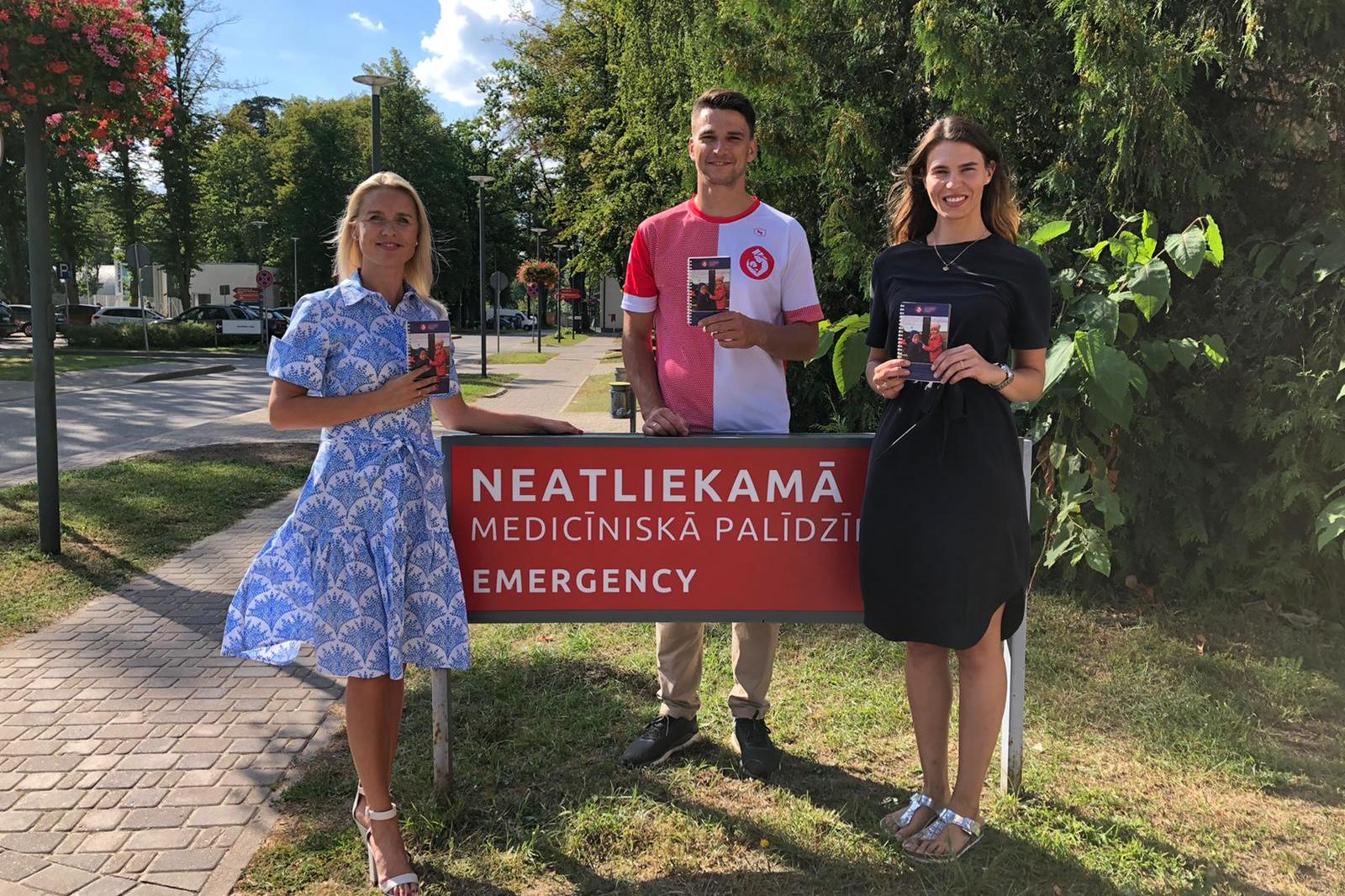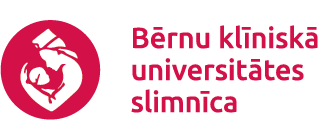The Children’s Intensive Care Guide to help thousands of children in critical situations!

Today, the Children’s Hospital Foundation and the Children’s Hospital specialists presented copies of the renewed Children’s Intensive Care Guide to the Chief Paediatrician of Ogre District Hospital, Dr. Paula Kļaviņa, as well as the doctors of the Emergency Medical Service (NMPD)! 1185 copies were handed over to the NMPD to suffice for all crew chiefs and physicians of the Operational Command Centre. In the near future, the Guide will also be available to other specialists in Latvia who participate in the emergency medical care process.
The first “BKUS Paediatric Intensive Care Guide” was published exactly 5 years ago – in August 2017 in 1,500 copies, and the new edition contains both additional information and responds to the huge demand from Children’s Hospital, NMPD and regional hospital doctors, physician assistants and nurses. Like the previous edition, this Guide will be available to specialists free of charge, thanks to the support of the Children’s Hospital Foundation.
“Dosing medicines in paediatrics is more complicated than in other medical fields. For example, the Children’s Hospital can treat both a premature baby weighing 500 grams and a teenager weighing more than 100 kilograms at the same time. Clearly, the dosage and equipment required for each of these patients will need to be adjusted accordingly. In critical situations, when time is short and the risks are high, relying only on memory is difficult and even dangerous. Therefore, the doctors of the Intensive Care Unit of the Children’s Hospital have created a pocket-sized Guide, in which one can quickly and easily find concise information on managing the most life-threatening situations for children,” said Dr. Reinis Balmaks, the Children’s Hospital Reanimatologist and one of the authors of the Guide.
The head of the NMPD Medical Quality and Qualification Management Centre and doctor Dzintra Jakubaņeca, when receiving the valuable Guide, emphasized: “The work of the medical team is unpredictable as you never know what kind of patient one will have on the next call. Once you have helped an elderly person who has been severely injured in a fire, after a while you have to take a woman with a suspected stroke to the hospital, but then you must be able to switch quickly and act without delay to save a child’s life. This year alone, there have been more than 21,000 calls related to children in need of emergency medical care. This Guide, which will reach doctors of our crews all over Latvia, will be a reliable advisor at critical moments when the right decision has to be made, providing emergency medical care to children of different ages in life-threatening situations.”
“The Children’s Hospital Foundation contributes to children’s health in a variety of ways, including by supporting the development of various educational materials related to children’s health. This small but valuable guide is an important and practical tool that helps doctors in very direct situations to save children’s lives and improve their health in critical situations. Due to the high demand we encountered 5 years ago with the publication of the first Guide, which proved how useful this material was for doctors, this time we increased the circulation and published it in 2,500 copies, allocating 6,700 Euro to that. Many thanks to the Children’s Hospital’s medical team: doctors Reinis Balmaks, Ivars Veģeris, Arta Bārzdiņa, Arnita Tomiņa, and Baiba Balmaka, as the publication was made thanks to their initiative and enthusiasm,” said Liene Dambiņa, the Head of the Children’s Hospital Foundation.
Medication doses, inventory sizes, and commonly used algorithms are summarized in the Guide in a logical order and according to the importance of this information during patient stabilization. Similar publications can be found in English and other languages, but it is important that it be in Latvian and contain information about the practice of the Children’s Hospital, thus ensuring continuity if the patient is transferred to the Intensive Care Unit for further treatment. Every year, about 700 children are treated in the Intensive Care Unit of the Children’s Hospital.


